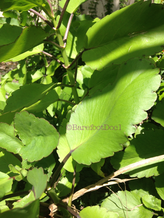
Uses:
* The leaves can be used to make a tea to treat most respiratory conditions such as colds, sinus and asthma, but it has also been used to treat arthritis, intestinal problems (like worms), ear infections and even calm the nerves. On my daily walk around the yard, I just pick one of the leaves 1st thing in the morning when it’s been bathed by morning dew, and chew it while I’m going around the property. It is reported to have immuno-suppressant properties so - as with all immunosuppressants - it is not recommended to be used for extended periods of time.
* In Ayurvedic medicine, the leaves are used to treat menstrual irregularities such as heavy or prolonged bleeding. Back home, the old “(mid)Wives” used to smoodgh (my word for mush, muddle, etc) the leaves & mix it with a little castor oil to apply to the breasts of nursing mothers suffering from mastitis.
* Used topically, you can crush and heat the leaves then wrap as a poultice to treat boils, rash, insect bites and bruises. For headaches, my Granny used to bruise the leaves a little, put the pasty pulp over wherever her head was hurting, and then wrap her entire head with a scarf. Before long, bye bye headache!
* Other health benefits: L-o-L has antibacterial, antiviral & antifungal properties, and research continues to look at using it with cancer patients (Xiuzhen, Y. et al. 1992. Isolation and Identification of Cytotoxic Compounds from Bryophyllum Pinnatum. Chinese Journal of Cancer Research vol 4(4) December).
I have tons of this growing in my yard if you’re interested; it’s a beautiful plant especially when it flowers, and makes a nice mound of thick fat leaves that just scream “Life! Health!” Health!” Life!”. Until next time, happy weed’n, happy healing, and in the spirit of the season: Happy Halloweening!
Audrey Steele, L.Ac.
Licensed Acupuncturist
www.Acupuncture4YourHealth.com
* Disclaimer: This information is educational in nature only, and is NOT intended to be a substitute for professional medical advice. You should not use this information to diagnose or treat a health problem or disease without consulting with a qualified healthcare provider. Please consult your healthcare provider with any questions or concerns you may have regarding your condition. The information provided is for educational purposes only and is not intended as diagnosis, treatment, or prescription of any kind. The decision to use, or not to use, any information is the sole responsibility of the reader.
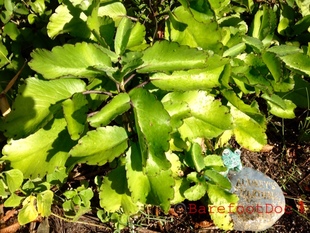
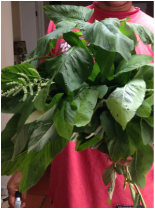
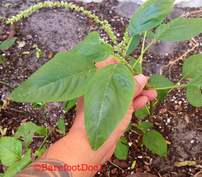
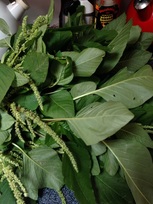
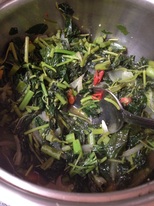

 RSS Feed
RSS Feed
